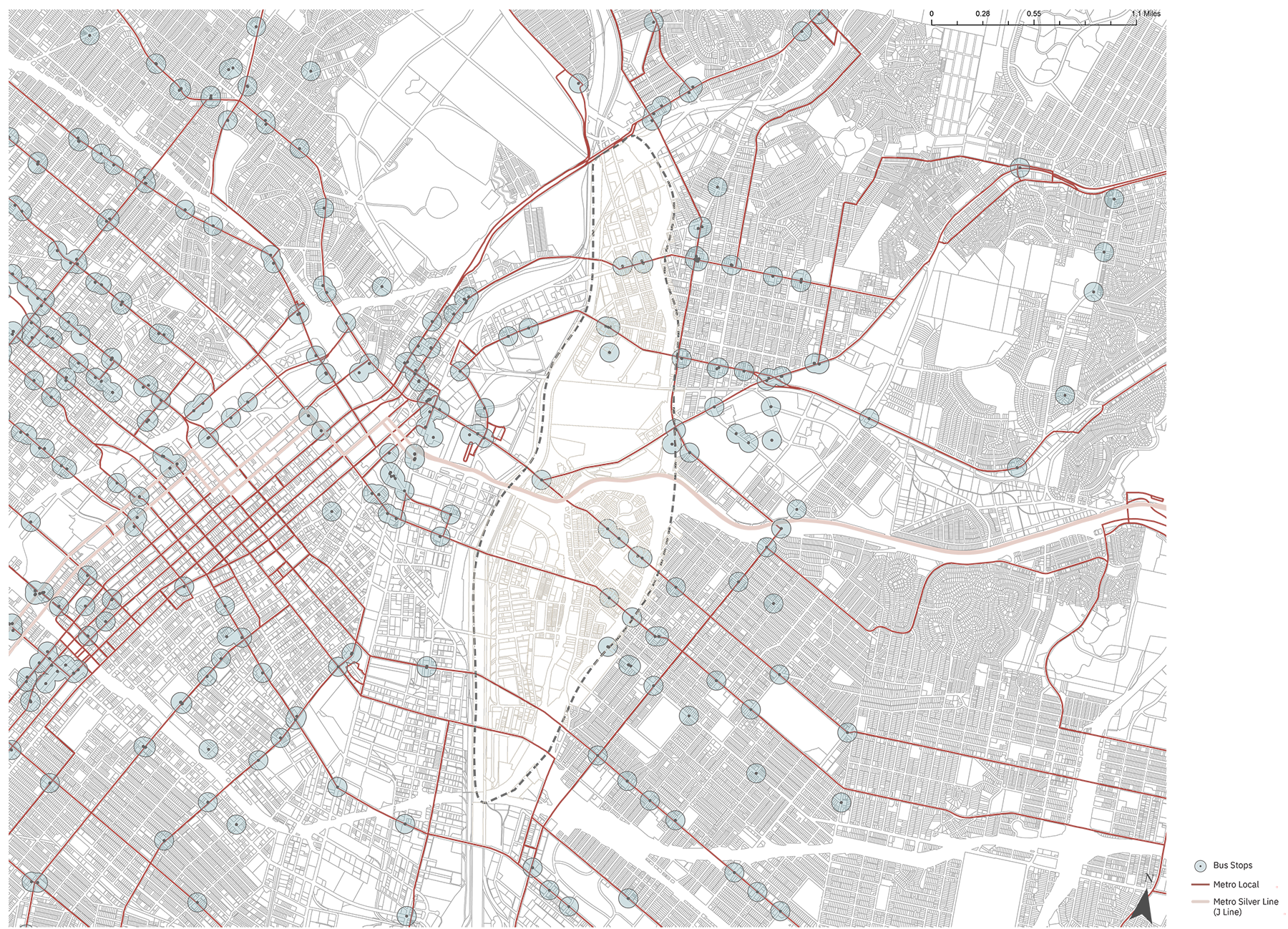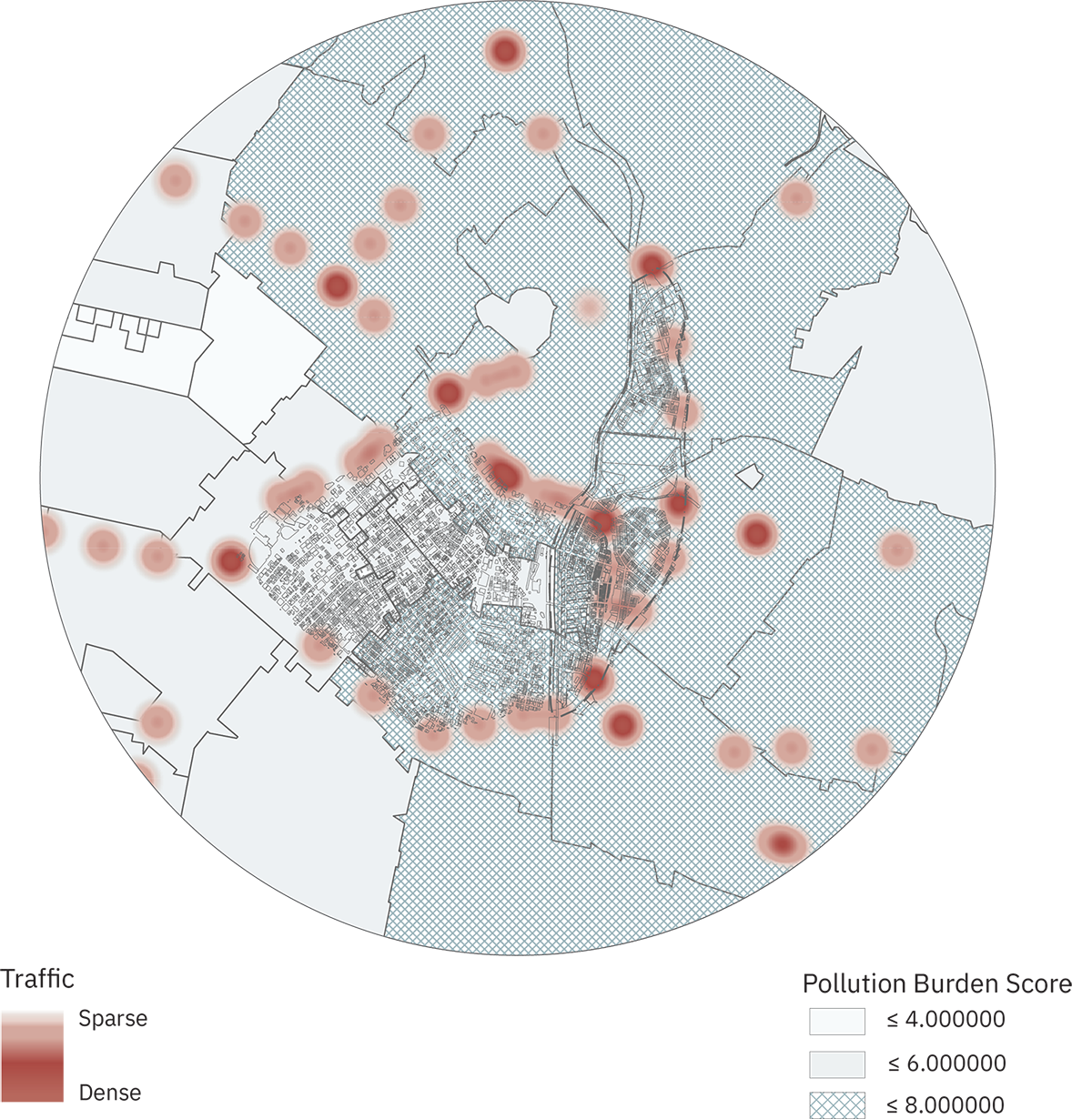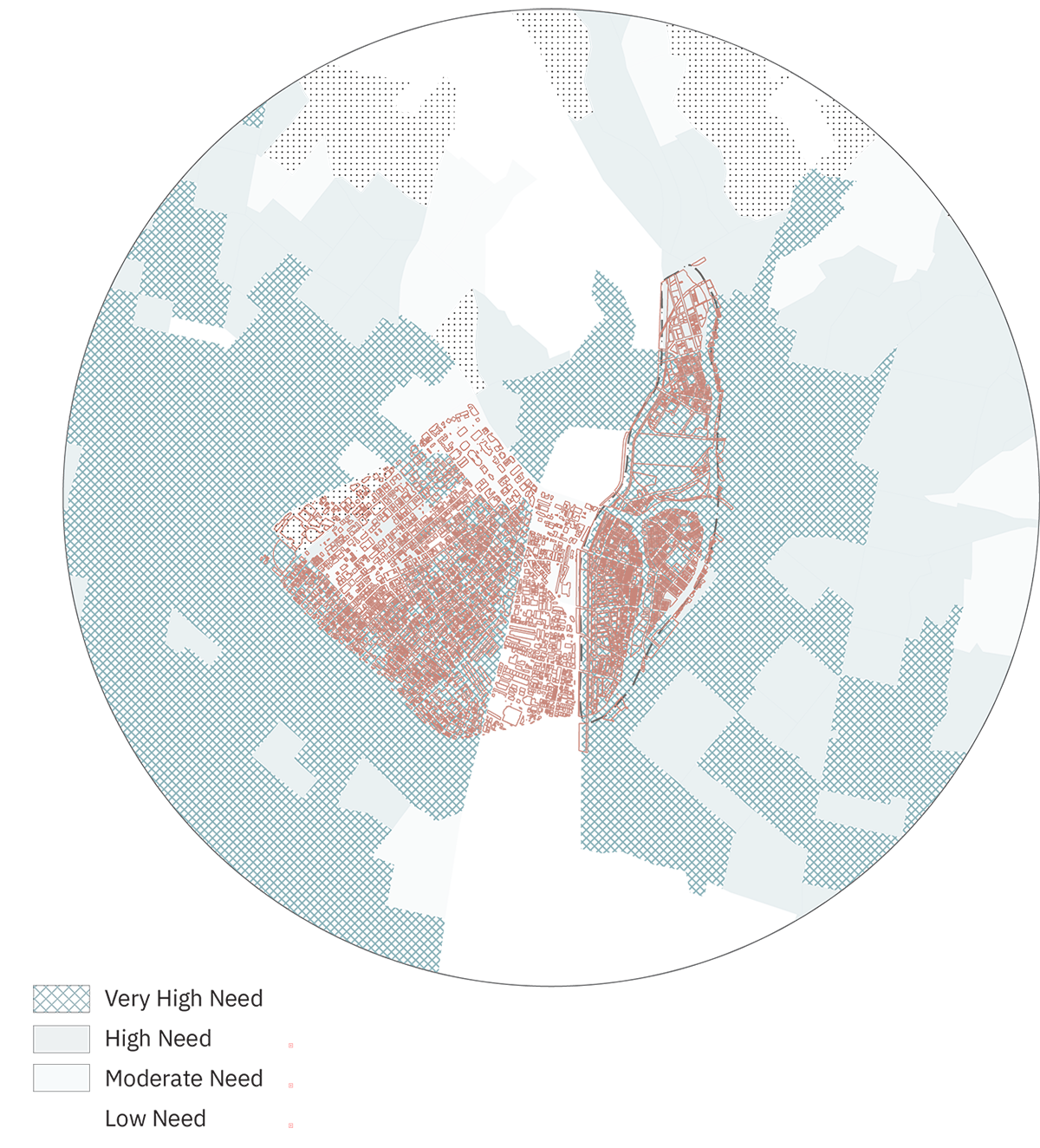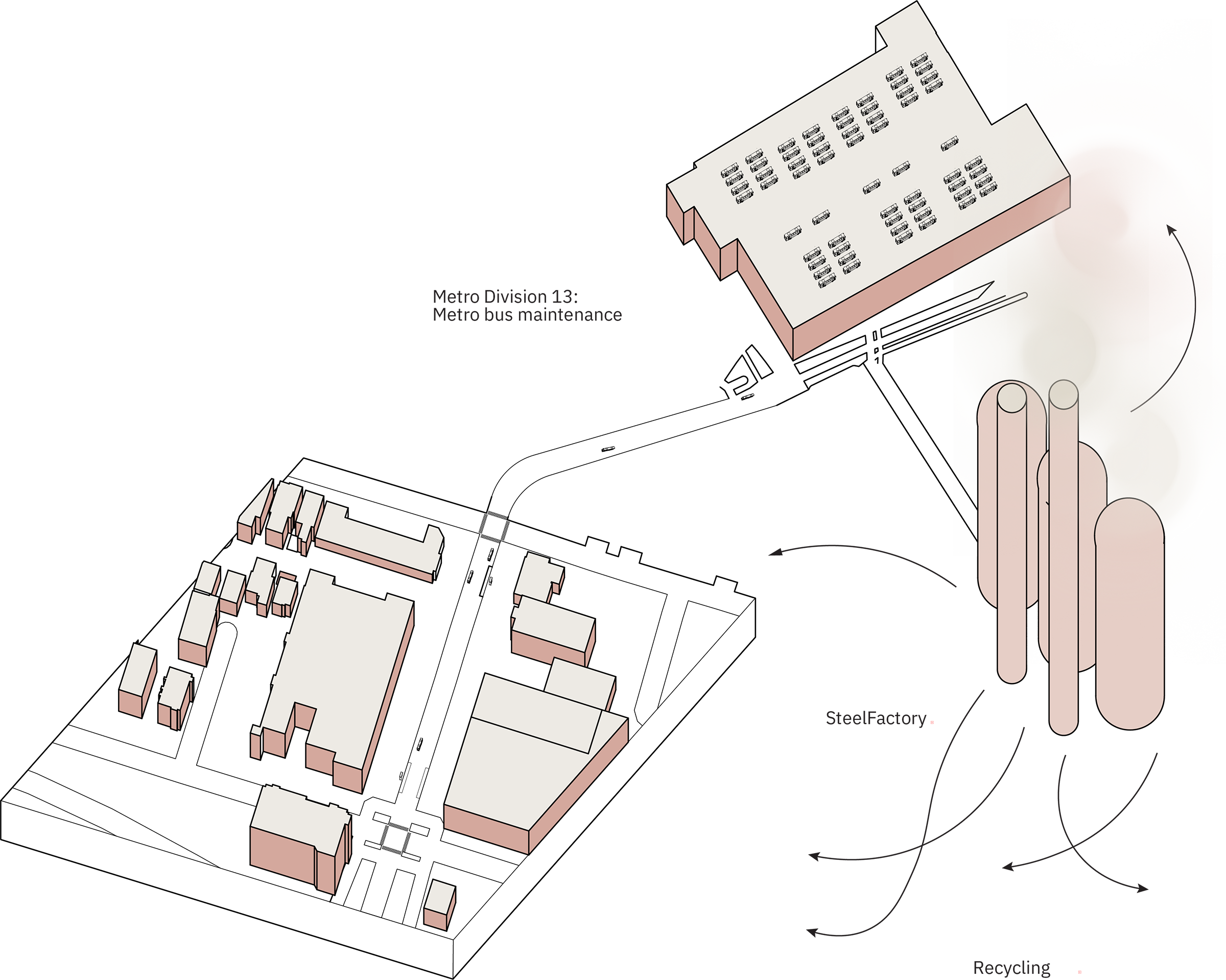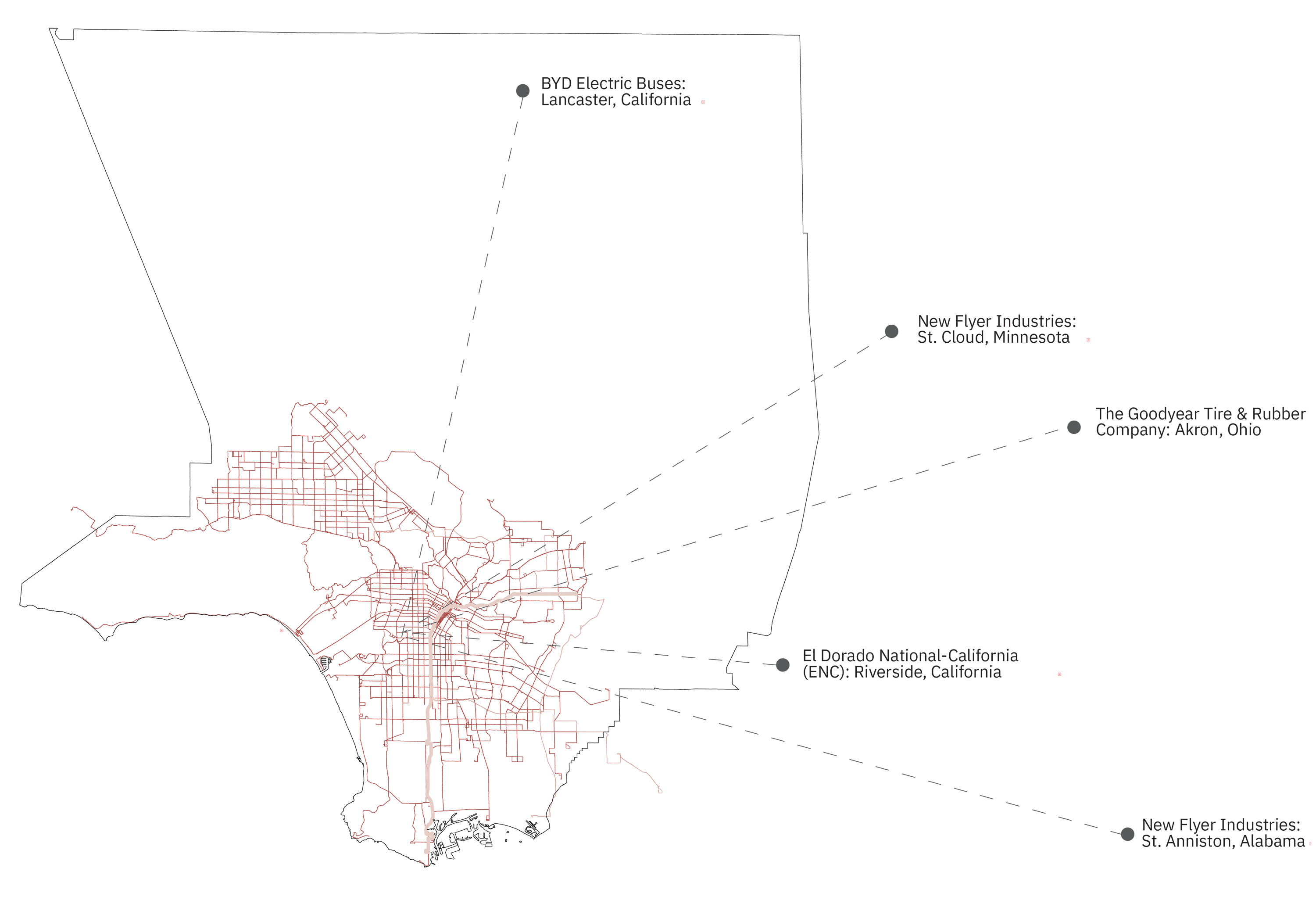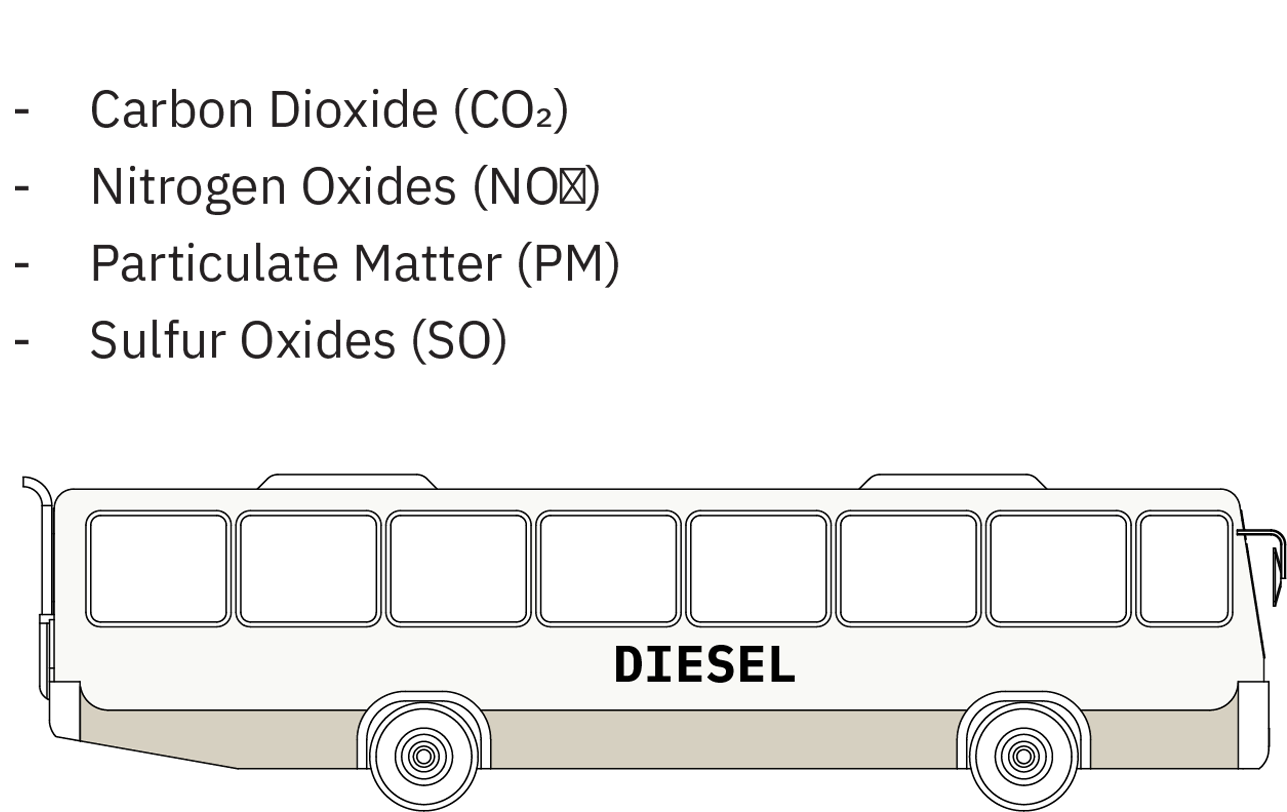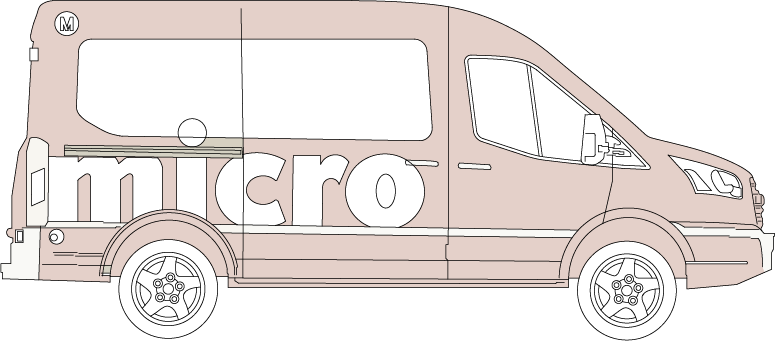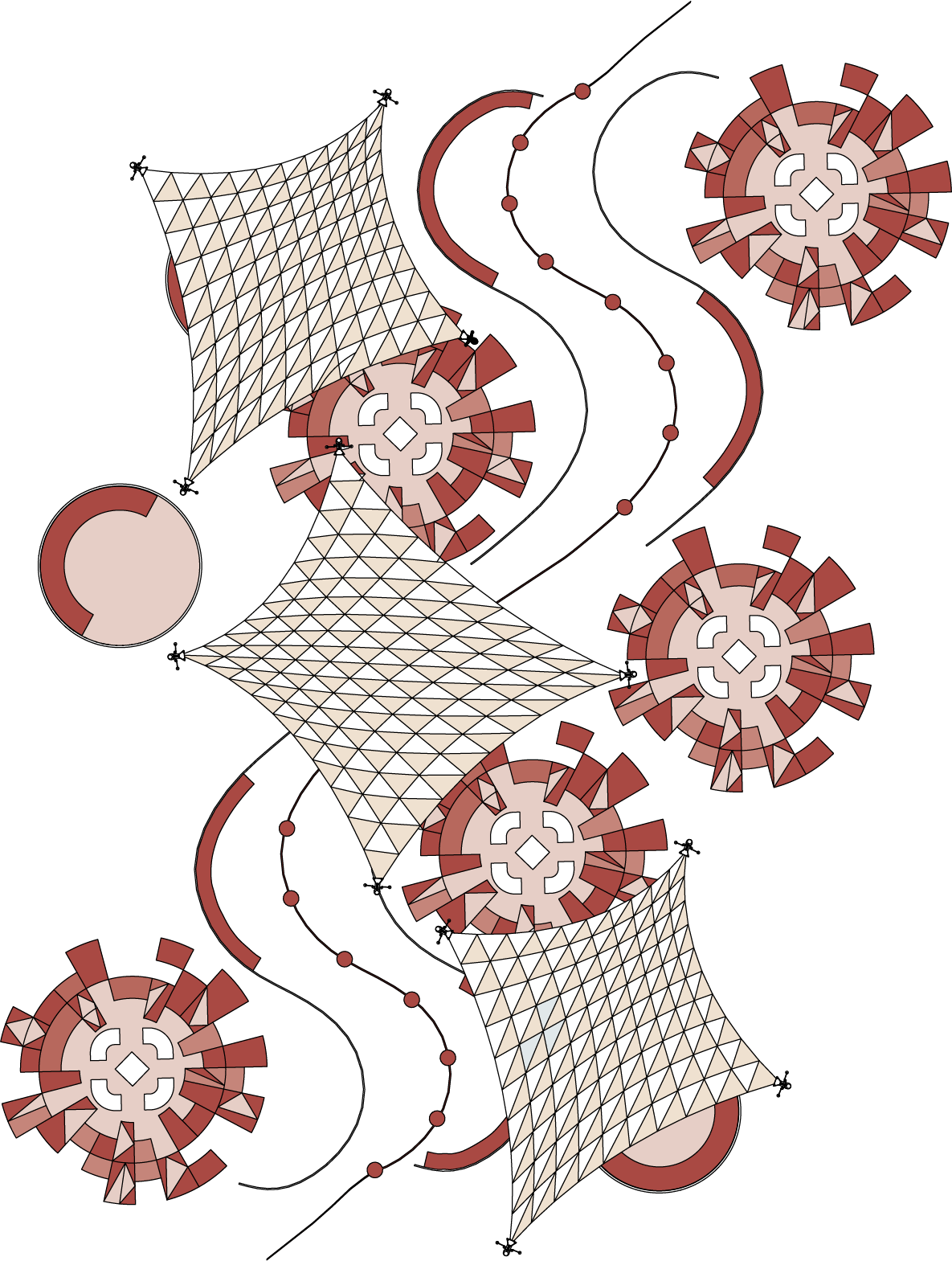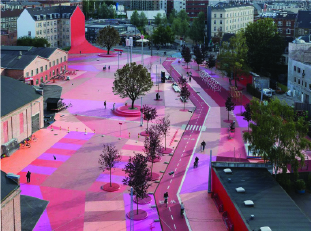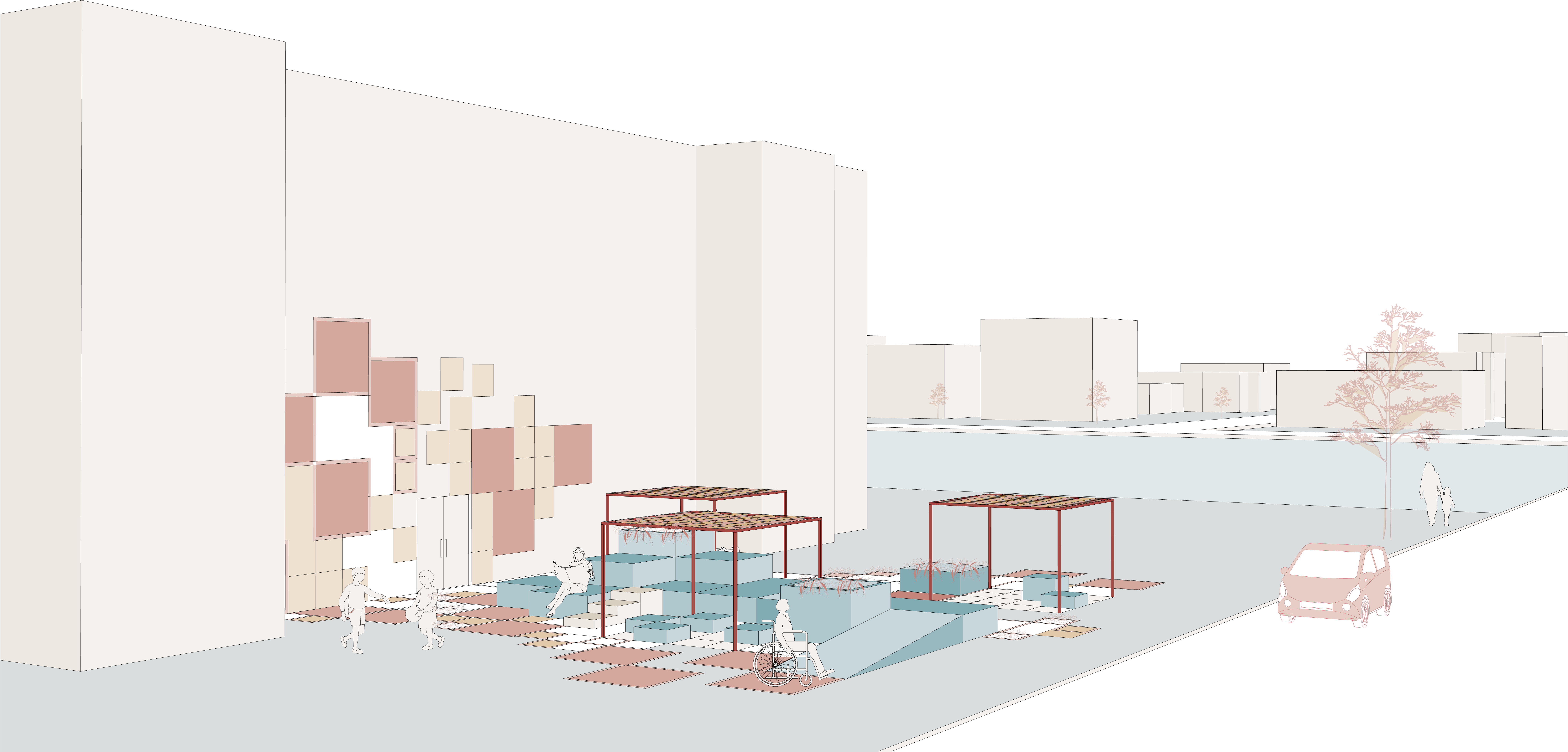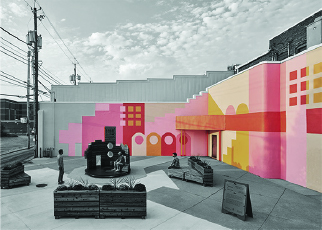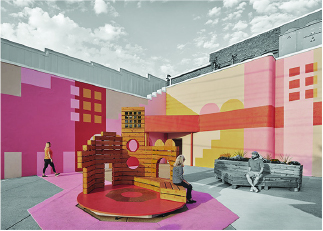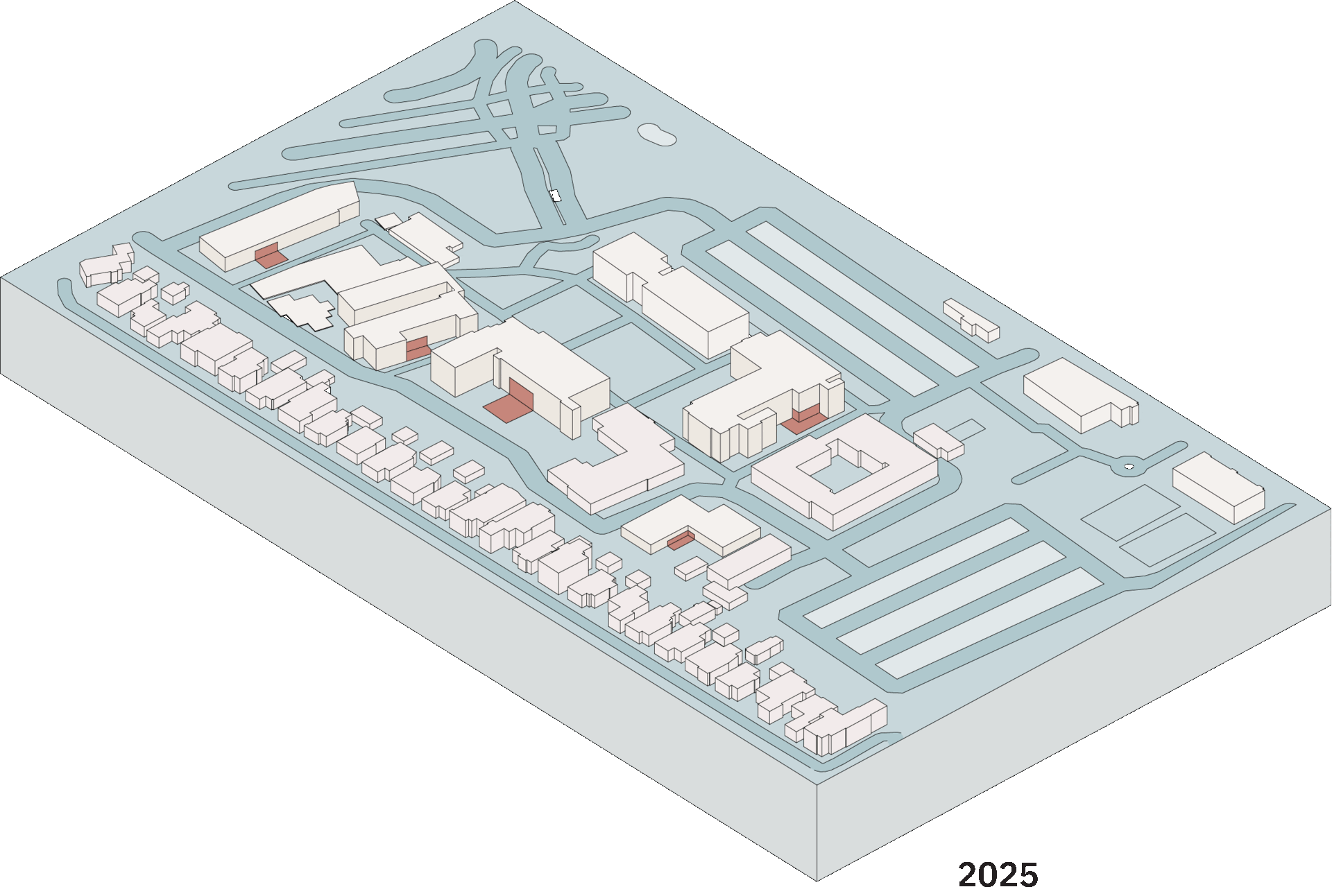Bus Transit
“Maps not only show facts (the locations of towns, rivers, and other socio-natural features), they also provide commentary on where architectural ideas will appear and when. Within a large area, they articulate where the architect’s thoughts will and will not be, where his or her effects will be felt and were not. These maps represent the crisis of authorship that defines the contemporary field, while still demonstrating the capacity of human beings to shape large arenas.”
— David Gissen
Los Angeles’ transit system reflects over a century of evolving urban priorities, from horse-drawn streetcars to electric railways and sprawling bus networks. Yet despite technological advances, the city remains car-dependent, with public transportation often overlooked or underutilized. This project reexamines infrastructure as more than a means of mobility, it’s an opportunity to reshape how communities connect, interact, and thrive. By analyzing the environmental weight, historical patterns, and future possibilities of LA Metro’s bus network, these proposals aim to reimagine transit as a catalyst for cultural, environmental, and spatial transformation.
PRE-METRO TRANSIT
1873
Los Angeles granted operational franchises for horse-drawn streetcar railways, marking the inception of public transportation in the city. (1)
1890s
Electric railways emerge. (5)
1923
The first regularly scheduled bus service in Los Angeles begins with the Los Angeles Motor Bus Company. (3)
1930s
Many streetcar companies convert to bus service. (4)
1951
The Los Angeles Metropolitan Transit Authority (LAMTA) was established to study a proposed 45-mile monorail system connecting Long Beach to Panorama City. (5)
1958
LAMTA began operating bus and streetcar lines after acquiring Metropolitan Coach Lines and Los Angeles Transit Lines. (1)
METRO ERA
1970s
Planning for rapid transit begins, including dedicated busway line the one along I-10. (1)
1993
The Los Angeles County Transportation Commission and RTD merge to form the Metropolitan Transportation Authority (now Metro). (6)
2003
The Gold Line opens to Pasadena. (1)
2005
The Orange Line opens. (1)
2009
Freeway busways become the Silver Line. (1)
2012
The Expo Line initial segment opens. (1)
2018
Metro initiated the NextGen Bus Study to redesign the bus network for improved efficiency, speed, and reliability, aiming to better meet current travel patterns. (1)
2020
Implementation of the NextGen Bus Plan began, focusing on increasing bus frequency, reducing wait times, and enhancing service during off-peak hours. (1)
INFRASTRUCTURE
WEIGHT OF LA METRO BUS TRANSPORTATION
DATA CALCULATION OF “WEIGHT” IN TONS
Embodied Material in One Bus Stop 2,500 – 3,500 lbs. (1.25 – 1.75 tons)
Typical Materials:
- Steel or aluminum frame
- Glass or plastic panels (if there is a shelter)
- Concrete pad
- Bench (metal, wood, or recycled plastic)
Rough Estimate:
- Steel/aluminum: 300 – 500 lbs. (structure + bench)
- Glass/plastic: 100 – 200 lbs
- Concrete pad: ~ 2,000 – 3000 lbs.
EMISSIONS FROM CONSTRUCTION & MAINTENANCE
- Greenhouse Gas Emissions (CO₂, CH₄, N₂O) (7)
- Concrete production emits large amounts of CO₂ (cement is responsible for ~8% of global CO₂ emissions). (7)
- Steel and aluminum smelting consume vast amounts of energy, primarily from fossil fuels.
- Asphalt paving releases volatile organic compounds (VOCs) into the air. (8)
MATERIALS DISPLACED OR EXTRACTED
- Metals (Steel & Aluminum) – Extracted from iron ore and bauxite mines, requiring high-energy processing. The shift to lighter aluminum buses has displaced some traditional steel components
- Concrete & Asphalt – Used for roads, bus lanes, and transit hubs, displacing large quantities of limestone, sand, and gravel, which are mined for production. (14)
- Petroleum-Based Plastics – Found in bus interiors, seating, and signage, contributing to oil extraction and refining. (13)
- Glass & Polycarbonate – Used in bus windows and shelters, requiring the extraction of silica sand. (15
AIR POLLUTANTS FROM BUSES
- Traditional diesel and natural gas buses have emitted carbon monoxide (CO), nitrogen oxides (NO), and particulate matter (PM).
- The transition to electric buses has reduced emissions from operations but still involves battery production, which has its own environmental impacts (e.g., lithium and cobalt mining) (16)
METRO MICRO
Metro Micro is an on-demand ride share service offering trips within eight designated zones within Los Angeles County. Service is provided with small vehicles (seating up to nine passengers) and is intended to provide first-mile, last-mile transportation to rail and bus lines and intra-community travel within LA (17)
SERVICE ZONES
- Watts/ Compton
- LAX/ Inglewood
- North Hollywood / Burbank
- El Monte
- Highland Park/ Eagle Rock/ Glendale
- Altadena/ Pasadena / Sierre Madre
- Northwest San Fernando Valley
- UCLA/ Westwood/ VA Medical Center
Bus Transit Proposals
The following proposal focuses on the neighborhood scale, examining how small interventions can have a big impact on local mobility and quality of life. It asks how public transportation can be more intimately woven into the everyday lives of residents, fostering accessibility, inclusion, and a stronger sense of place.
PROPOSAL
THE LINK HUB
This proposal introduces a bold redesign of Los Angeles’ bus transportation system through the creation of Link Hubs—multi-functional, accessible, and community-driven transit centers that replace clusters of underused bus stops. These hubs serve as central gathering points for neighborhoods, offering social spaces, transit amenities, and improved connectivity. In tandem, the proposal transitions LA Metro’s fleet to fewer, high-capacity, low-emission double-decker buses, operating along streamlined routes with greater efficiency. By reducing the number of stops and optimizing route design, the Link Hub Network improves travel speed, reduces carbon emissions, lowers maintenance costs, and creates a more enjoyable transit experience. This system especially benefits underserved areas, supporting both environmental justice and sustainable urban growth. Neighborhood connections through design that prioritizes both utility and community.
|
ISSUE |
CURRENT DATA | PROPOSAL RESPONSE | EXPECTIVE QUANTITATIVE IMPACT |
| Slow Speeds | Avg 12mph | Reduce stops – faster routes | +15-30% speed increase |
| Stop Inefficency | 20% of stops = <5 riders/day | Consolidate into link hubs | 25% cut in route dwell time |
|
Emissions |
1.3 kg CO2/mile | Fewer electric double-deckers | 50-80% emissions reduction |
| Ridership Decline | Down 25% since 2014 | Better design – faster service | 20%-40% ridership recovery |
Precedence Images
Superkilen / BIG and Topotek, Copenhagen, Denmark
Superkilen is a half a mile long urban space wedging through one of the most ethnically diverse and socially challenged neighborhoods in Denmark. It has one overarching idea that it is conceived as a giant exhibition of urban best practice – a sort of collection of global found objects that come from 60 different nationalities of the people inhabiting the area surrounding it. (21)
Potential Partners
LA Metro (Los Angeles County Metropolitan Transportation Authority)
-
- Central partner for infrastructure and transit planning.
- Already exploring “NextGen Bus Plan” and mobility hubs.
California Air Resources Board (CARB)
-
- Possible funding and technical support around emissions goals.
In 2025
Most people in Los Angeles still rely on cars instead of public transportation, leading to heavy traffic, high pollution, and a large carbon footprint.
By 2027
Link Hubs will start reshaping Los Angeles into a more connected and sustainable city. These hubs will speed up bus routes, reduce the number of vehicles on the road, and cut emissions. More people will choose public transit as it becomes faster, cleaner, and more community focused.
By 2045
Link Hubs will reshape Los Angeles with better land use and active public spaces like cafés and mobility docks. While construction and concrete pads may raise short-term CO₂, fewer hybrid or electric double-decker buses will reduce emissions overall. As transit use grows and car trips drop, neighborhoods will see cleaner air, lighter traffic, and more walkable streets, especially along major corridors like Wilshire and Ventura.
By 2125
Los Angeles will become a model post-carbon city, with air quality matching that of Vancouver or Oslo. Clear blue skies will replace decades of smog, transforming the city’s atmosphere. With fewer buses, efficient routes, and compact mobility networks, LA will reduce millions of tons of transport-related emissions. As this model expands globally, it will play a key role in slowing down the impact of urban transportation on climate change.
PROPOSAL
THE LINK COMMUNITY
This proposal introduces Link Community Stops, a network of small-scale, open-air transit points designed for local micro-mobility service operated by 10-passenger mini vans. These stops will be thoughtfully integrated into existing community buildings—such as schools, churches, libraries, and neighborhood centers—and designed to reflect the architectural character of each site. Serving short-distance, hyper-local routes, the mini vans will connect residents to nearby destinations like parks, shops, schools, and major transit hubs. By blending transit into the everyday fabric of neighborhoods, Link Community Stops create a flexible, accessible, and community-driven mobility solution that strengthens local connectivity and supports equitable transportation access.
Precedence Images
Carousel for Companionship (Creative Placemaking), Columbus, Indiana
The Carousel for Companionship is a creative placemaking project in downtown Columbus, Indiana. This manually operated rotating platform hosts public programs, performances, and play. Inspired by the city’s iconic architecture, its sculptural forms and vibrant super graphic murals activate an underused lot behind the main commercial strip. As the carousel spins, the visuals shift in and out of alignment, creating a dynamic public art piece, play structure, and open-air stage that energizes the surrounding streetscape. (22)
Potential Partners
- LA Metro (Los Angeles County Metropolitan Transportation Authority)
- Local colleges and universities
- LAUSD
- Los Angeles Public Library System
The Link Community Proposal
Transformation Over Time
Sources
- “Libraryarchives.metro.net – /.” 2024. Metro.net. 2024. https://libraryarchives.metro.net.
- “January 4: This Date in Los Angeles Transportation History.” 2011. Metro’s Primary Resources. November 29, 2011. https://metroprimaryresources.info
- “LA’s First Bus Line.” 2023. LAist. 2023. https://laist.com
- St. Clair, David. 2020. “Los Angeles Public Transit in the 1930s: The All-Bus Proposal.” International Journal of Business, Humanities and Technology 10 (3). https://doi.org/10.30845/ijbht.v10n3p1
- “Los Angeles Metropolitan Transportation Authority (1951-1964).” 2024. Metro’s Primary Resources. July 15, 2024. https://metroprimaryresources.info
- “ENVIRON1liENTAL STATEMENT on PROPOSED EXPRESS BUSWAY on the SAN BERNARDINO FREEWAY (FA~-LO) INCLUDING PROPOSED BUS SERVICE and BUS ROUTES to and from the BUSWAy[.” n.d. Accessed April 16, 2025. https://libraryarchives.metro.net/dpgtl/scrtd/1971_des_proposed_express_busway_i10.pdf.
- Sullivan, Kate, and Grace Olson. 2022. “Laying the Foundation of Cement and Concrete Decarbonization.” World Resources Institute. 2022. https://www.wri.org
- Li, Jue, Yurong Qin, Xinqiang Zhang, Bailin Shan, and Chaochao Liu. 2024. “Emission Characteristics, Environmental Impacts, and Health Risks of Volatile Organic Compounds from Asphalt Materials: A State-of-The-Art Review.” Energy & Fuels 38 (6): 4787–4802. https://doi.org/10.1021/acs.energyfuels.3c04438
- “GOODYEAR AWARDED CONTRACT with LOS ANGELES COUNTY METROPOLITAN TRANSPORTATION AUTHORITY.” 2025. Media | Goodyear Corporate. 2025. https://news.goodyear.com/goodyear-awarded-contract-with-los-angeles-county-metropolitan-transportation-authority-1426100398749.
- “LA Metro’s Fleet of CNG Fueled Buses Is Largest in U.S.” 2024. Hexagon Agility. 2024. https://hexagonagility.com/cases/la-metros-fleet-of-cng-fueled-buses-is-largest-in-u-s.
- Liahusha, Tanya. 2021. “L.A. Metro’s G Line Now Fully Electric – New Flyer | North America’s Bus Leader.” New Flyer | North America’s Bus Leader. October 15, 2021. https://www.newflyer.com/2021/10/l-a-metros-g-line-now-fully-electric.
- staff-author. 2013. “Area BYD Plant Will Supply Metro Buses – Los Angeles Business Journal.” Los Angeles Business Journal. June 27, 2013. https://labusinessjournal.com/manufacturing/area-byd-plant-will-supply-metro-buses.
- Chu, Amanda, Jamie Smyth, and Kenza Bryan. 2024. “Exxon Leads Industry Fight against UN Plans to Limit Plastic.” @FinancialTimes. Financial Times. April 22, 2024. https://www.ft.com/content
- bitumen6070. 2024. “Environmental Impact of Bitumen – ATDM.” ATDM Co. June 11, 2024. https://bitumen6070.com
- “Green Glass: Environmental Impacts and Considerations in Glass Production.” 2024. Pure Natural Plant Extracts Manufacturer – over 21 Years. 2024. https://www.greenskybio.com/plant_extract/-green-glass-environmental-impacts-and-considerations-in-glass-production.html.
- admin. 2025. “The Environmental Impact of Lithium-Ion Battery Production and Disposal – Volt Coffer.” Voltcoffer.com. March 11, 2025. https://www.voltcoffer.com/the-environmental-impact-of-lithium-ion-battery-production-and-disposal
- “Metro Micro – LA Metro.” 2024. LA Metro. November 16, 2024. Http://www.metro.net/micro/
- “L.A. Transit Ridership Drops 15 Percent in 5 Years despite New Light Rail Extensions.” Planetizen.com, 2018, www.planetizen.com/news/2018/01/96953-la-transit-ridership-drops-15-percent-5-years-despite-new-light-rail-extensions.
- Matute, Juan. “Op-Ed: L.A.’S Slow Buses Aren’t Just Shedding Riders, They’re Becoming Climate Liabilities.” Los Angeles Times, 18 June 2019, www.latimes.com/opinion/livable-city/la-oe-matute-bus-metro-climate-change-emissions-20190618-story.html
- Nelson, Laura J. “L.A. Metro Proposes More Buses, but Fewer Stops, on Major Streets.” Los Angeles Times, 14 Jan. 2020, www.latimes.com/california/story/2020-01-14/la-metro-bus-network-overhaul-rapid-buses-falling-ridership
- ArchDaily. 2012. “Superkilen / Topotek 1 + BIG Architects + Superflex.” ArchDaily. October 25, 2012. https://www.archdaily.com/286223/superkilen-topotek-1-big-architects-superflex.
- “Carousel for Companionship | Could Be Design.” 2024. Couldbe.design. 2024. https://couldbe.design/work/carousel-for-companionship.

